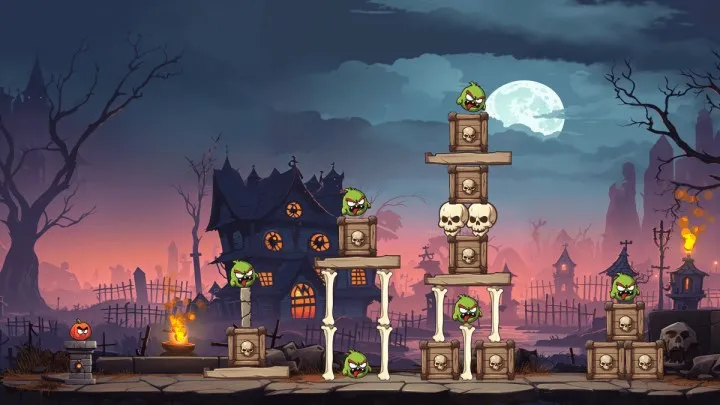The game was developed entirely using artificial intelligence

The use of artificial intelligence is becoming increasingly widespread. A developer announced that he has developed a game called “Angry Pumpkins” using entirely artificial intelligence models.

When you see and hear a game called “Angry Pumpkins” you may think of that game of birds being thrown around. Despite the strong inspiration, Angry Pumpkin’s trademark is that it was created entirely with artificial intelligence tools. In other words, the codes and graphics of the game were created not by a team of programmers and developers, but with tools such as ChatGPT and Midjourney.
Game made entirely with artificial intelligence
Developer Javi Lopez used ChatGPT 4 to create an interactive version of Angry Pumpkins. Thanks to GPT-4, a complete and working code of 600 lines containing the necessary instructions was obtained. While Midjourney was used to create the objects, characters and backgrounds in the game, DALL-E 3 was used to design the start screen.
Even though this is an Angry Birds imitation, the fact that it is entirely artificial intelligence and made by a single person shows the point we have reached. The most important aspect of this is actually on the cost side. Games and game development seem like a simple thing to most people. However, on the contrary, game development requires specialization along with interdisciplinary work.

From writers to game engine or system coders, from lighting and character artists to music producers, from casting to filming and the logistics required to support it all, modern video games require multi-disciplinary work to turn into a successful product. As a result of all this, games offer consumers something that cinema or music cannot: interaction. Ultimately, games can be thought of as alternative realities.
Turning to the cost side, the leader in this field right now is Star Citizen, with $600 million in crowdfunding. Another example, Cyberpunk 2077, is estimated to cost approximately $500 million to develop across consoles. The original Angry Birds, released in 2010, cost $140,000. For Javi Lopez’s Angry Pumpkins, ChatGPT, Midjourney, DALL-E 3, a computer and internet access are sufficient. Voice-generating tools can also be added to these AI models. You can click here to try the game.
The game development business is changing, but is that a good thing?
Thanks to artificial intelligence, it is possible to do all of the above in your native language. As the diversity and power of generative AI increases, so do the possibilities. In the past months, we have seen that everything from images to stories in children’s books is made with artificial intelligence. Now the games have reached this point.
In the end, it’s all about prompt engineering. In other words, conveying what is wanted from the artificial intelligence model in a simple but detailed way. And that means patience and iteration. But it’s still easier than getting lost in the codes. Offering a look into the not-too-distant future, Angry Pumpkins and Javi Lopez also reveal the risks.
Think of it this way. Using artificial intelligence tools is not a difficult thing and a person can easily use more than one model. For companies, this means fewer people are required. Fewer people can result in less ideas and creativity. Centralization of creativity can sometimes result in good and sometimes bad works. However, there is still some time to reach this point, as there is a copyright infringement issue that needs to be resolved. Therefore, more water will flow under this bridge.






